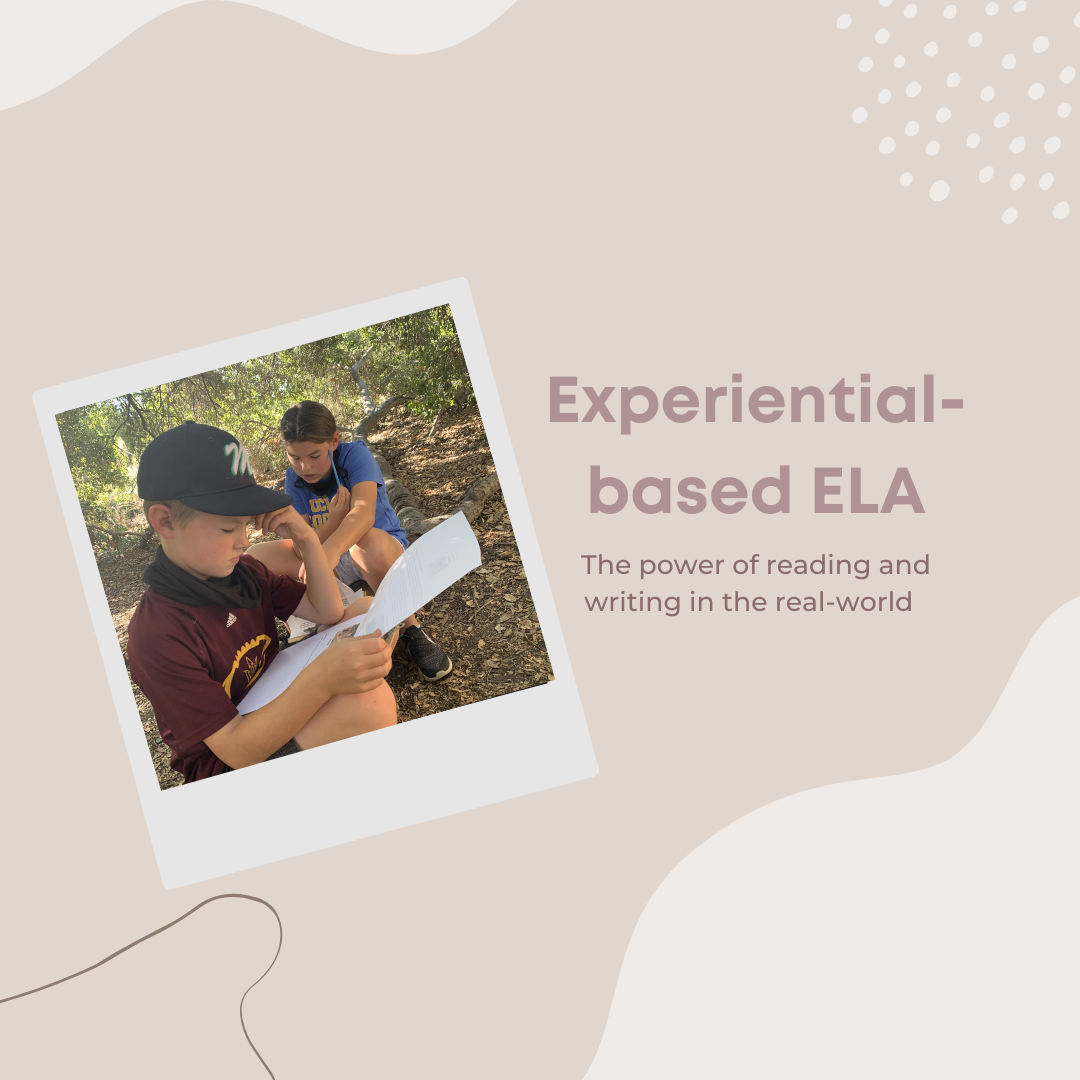In project-based learning (PBL), exploring the real-world to enhance or deepen student learning is called field work. There are many barriers that teachers face in a brick and mortar classroom that homeschool parents aren’t bound by; For example, permission slips, transportation and bell schedule logistics. For homeschoolers, the world is truly the classroom. An exciting opportunity that I have discovered as a homeschooling parent is the beauty of experiential learning, especially for teaching reading and writing.
Our year of homeschool is driven by PBL. For every project, and every week within a project, I aim to take my children out for field work one to two times. While we are out on an interpretive hike, visiting a museum or aquarium, or viewing space in the community I bring along our literacy lessons for the day. On any given day, here is what that looks like:
- I Take our non-fiction, project related books to read on a picnic blanket at the location of our field work
- We complete descriptive or reflective writing using our observations from a bench and lap desks
- I ask my kids to apply what we are seeing on our field work to project concepts using field notes that I develop in advance (Educator tip: many places in the community provide free teacher lesson plans that you can use! Or simply create a basic graphic organizer for them to synthesize and analyze their notes)
- Use informational placards to read and learn together
- Turn the back of our car into a comfortable space (with blankets and pillows) for us to read our novel together and make “text to world” connections, based on our current location or field work.
As a result of these experiential-based literacy lessons, here is what I have found:
- My kids better retain what they read because they are able to connect it to the real world
- They are more engaged in literacy skills and concepts when we are outside the walls of our home classroom
- They are developing habits and demeanors of life-long learners who are curious; they now read all the information that the world has to offer (you know, things like those placards we pass every day on our walk at the beach; Or the educational messages at the zoo that we ignore as we adore the animals).
To plan for these opportunities to push my kids deeper in their project learning and literacy connections, I go about the following steps and questions:
- Look for themes we are reading about in our novel and make connections to our community. I ask “is there somewhere I can take them to see this theme in action?”
- For research writing I ask myself “where can I take them that will make them curious or inspire them to want to learn more about related topics?”
- For novel settings I ask “ is there somewhere that mimics this setting that I can take them to help bring the book to life?”
- For project concepts I ask “where can we go to observe more? And what can I bring to help push them deeper in their learning?”
- If an author or a project topic is promoting awareness of a given issue, I will ask myself “ Where can I take them to help make them more aware of this problem?“
While it does require some additional logistics to coordinate our busy homeschool schedule, I find that every minute we spend experiencing what we are reading and writing to be worth the effort! To learn more about planning PBL or PBL lite with experiential-based ELA embedded, check out my resources:
Additional Parent Resources
- PBL for parents mini e-course (homeschool or distance learning enrichment)
- Making and tinkering at home
- NEW pbl ideas for summer enrichment
- How to set up an enrichment space at home
- Using sports to engage learning at home
- Projects for parents to run at home
- 3 tips for working parents to survive COVID-19
- PBL-ish ideas for parents
- PBL Lite for Parents
- 5 reasons why kids need PBL this summer
- PBL parent resources: Pinterest Board
- How ‘regular’ parents can homeschool by CNN
- Daily learning plans from an Expert
- Parent activities to do at home
- Screen Free activities
- A parent guide for COVID19 times
- For parents of “littles”
- How to create authentic learning at home
- For parents suddenly teaching Learner Based Learning: A guide
- How to Keep School Rhythm and Routines for Young Children at Home
- Tips for parents at home
*Disclaimer*
I love sharing my favorite teaching and parent resources~ all of which are from my own experiences and are simply my opinions. I do participate in the Amazon Affiliate Program, where I may earn a small commission from purchases made from these links. If you like them, please share them~ I appreciate your support.

